The use of tyres as a tool for construction is just the next step in the evolution of the wheel. Tyres have long been a menace to dispose of off since they are not biodegradable, they are big and are everywhere. In America alone there are 300 million tyres disposed every year, out of those 20%, or 60 million do not have any market, they are stockpiled or end up in landfills. The use of tyres as building materials solves two problems at once, disposing some of the 60 million tyres, and reducing the environmental and financial impact of building a home.
The basis for the use of tyres as construction material was its quality as a heat conductor. In fast moving vehicles, such as race cars, tyres may actually conduct/ transmit enough heat to spontaneously combust. When used as a foundation for homes, tyres act as heat sinks. This simply means that they transfer heat from high temperature to a lower temperature.
Heat is removed from inside the house to underground. This is especially useful in tropical climates. There are two alternatives on how to use tyres in construction. The first method is Rammed Earth Construction and the other is Tire Bale Construction.
Rammed Earth Construction
In this method, recycled tyres are filled with compact soil to form what is referred to as rammed-earth bricks which replace traditional wood framing used in most American households. From the time of the Romans to modern sky scrapers soil has been the main building material whether clay or sand. The main aim of using soil for construction is to ensure energy efficiency by conserving heat in winter and remaining cool during the summer. In rammed earth construction tyres soil is packed tightly into the tyre frame using a cardboard sheet on the bottom.
Typically, a 4,000-square foot house can use 2,000 tyres. In Earth ships, the gaps in the frames due to the cyclical shape of the tyres are filled with other recyclable materials like glass/plastic bottles or aluminium cans. Earth ships are a concept first developed by Michael Reynolds in 1970 where houses are made using only recycled and naturally occurring materials. The idea has taken off in recent years with a lot of people looking to build earth ships as second homes.
Earth ships are a concept first developed by Michael Reynolds in 1970 where houses are made using only recycled and naturally occurring materials. The idea has taken off in recent years with a lot of people looking to build earth ships as second homes.
Tire Bale Construction
Tire bales are used an alternative way to utilize tyres as a recyclable construction resource without the labour-intensive process of packing 2,000 tire bricks. A tire bale consists of about 100 compacted tyres made into a square brick. It weighs approximately 900 kilograms. Construction using tire bales utilizes thousands of these compacted tyres, a lot more than the rammed-earth method. The tire bales frame the outside walls of the house stacked like bricks to cover the whole house.
The walls of either method is smoothed over with cement then layers of plaster or stucco are added to finish.
Tire Building Codes
The tire building codes provide the baseline for determining whether a building built from tires is safe. It is for both the builder and the inspectors to ensure a good construction. The walls of these buildings are the only unorthodox aspects of these buildings and thus covered by these codes. The roof and floors are covered in the uniform building code.
It is for both the builder and the inspectors to ensure a good construction. The walls of these buildings are the only unorthodox aspects of these buildings and thus covered by these codes. The roof and floors are covered in the uniform building code.
These are some of the highlights of the construction code for building using tyres.
1. Tires 13 inches in diameter are the smallest tires that can be used while 16 inches are the largest.
2. The first layer of tires must be larger in diameter than all the tires making up the wall. No tire in the wall should be larger in diameter than the tires in the wall. Walls over six layers should have ground tires with larger than 15 inches’ diameter.
3. All load bearing walls eight layers or higher built with earth rammed tyres should have a continuous bond beam to connect adjacent non-load bearing tire walls.
4. Every opening in earth rammed tire walls should have concrete half blocks on each side of the opening.
5. Earth rammed tire structures over two stories should be designed by a licensed architect.
6. Earth rammed tire walls are not sensitive to expansion/ contraction of cracks hence no limit is placed on the length of the walls
7. Earth rammed tire walls which form an integral part of the house have a maximum set height of 10 feet.
8. Joints and connections in tyre built walls should have overlapped tyres and connection methods in order to avoid overlapping of stacked joints.
They are only guidelines right now and are still subject to evolution or amendment since it is still a new method of construction. More guidelines can be found on Earth ship Volume I and II.
Advantages of Tyre Construction
There are numerous advantages of construction using recycled tyres. The main advantage obviously is that this method is very cheap or in some cases free. This greatly reduces the cost of owning a home in these economic times. It is good for the environment. Utilizing tyres that would have eventually ended up as waste materials goes a long way in waste management and environmental conservation. Buildings constructed using tyres also conserve and increase energy efficiency by providing high levels of thermal mass without destroying the environment. There is minimal waste material in the construction process and these materials may be utilized in the construction when constructing earth ships. Tyres are strong and durable making the buildings constructed disaster resistant, particularly for weather emergencies.
This greatly reduces the cost of owning a home in these economic times. It is good for the environment. Utilizing tyres that would have eventually ended up as waste materials goes a long way in waste management and environmental conservation. Buildings constructed using tyres also conserve and increase energy efficiency by providing high levels of thermal mass without destroying the environment. There is minimal waste material in the construction process and these materials may be utilized in the construction when constructing earth ships. Tyres are strong and durable making the buildings constructed disaster resistant, particularly for weather emergencies.
Disadvantages of Tyre Constructions
Building with tyres is a very labor intensive process with very heavy bricks to carry during construction. Old tires do indeed give off the gas but they need to be exposed to light in order to be broken down. In tire bales constructions, the tires are covered by stucco or plaster hence not exposed and no gas is emitted. Tyres are highly flammable but the structures built are not prone to fire risks since they have thick walls and a plaster layer cutting off oxygen and providing fire resistance. It is evident that there are little drawbacks to using tyres in your construction.
Tyres are highly flammable but the structures built are not prone to fire risks since they have thick walls and a plaster layer cutting off oxygen and providing fire resistance. It is evident that there are little drawbacks to using tyres in your construction.
By reusing tyres which would have been a waste as materials for construction and the resulting decrease in artificial energy consumption, the strain to the environment is reduced while providing a comfortable and affordable home.
| ||
| Website Exclusive • December, 2002 |
|
Need a prolonged workout? Want to do some major recycling? Want to stay warm and cozy with the help of the sun? All of this can be accomplished when you build your own tire house.
Some of you may be familiar with the term “Earthship”, the concept originated by Michael Reynolds, or may have seen Dennis Weaver’s house featured on public television and in magazines. Our house is similar to those. We are building ours in New Mexico, just east of Albuquerque. It is incredibly labor-intensive but a lot of fun and very rewarding.
|
The rows are laid brick-fashion until you have the walls nearly as high as desired. Then a frame pony-wall is built on top of that and the ceiling joists are laid on those, covered with plywood, and, in our case, a rubber (EPDM) roof. Insulation and the ceiling are constructed just as in a frame house.
As you will see in the photos, tires are used to construct the load-bearing walls. [Fig.1] The sidewall of the “top” side of each tire is cut out, then the tires are laid flat and filled with compacted dirt. [Fig. 2] It is estimated that each tire weighs approximately 300 pounds when filled.
Obviously, when tires are stacked like that and they are all filled with dirt, there has to be a way to keep the dirt from falling out of the spaces on the under side of the tire in the top row. Reynolds placed cardboard between the rows. We elected to use even more tires and used a reciprocating saw to cut the treads into pieces that could be screwed into the two neighboring tires. Fill this “valley” with dirt and compact it just as you do the tires themselves. Using this method, developed by Jim Bleakley, a neighbor and fellow tire-house builder, helps to make the wall more even and cuts down on the amount of in-fill needed. [Fig. 2]
Reynolds placed cardboard between the rows. We elected to use even more tires and used a reciprocating saw to cut the treads into pieces that could be screwed into the two neighboring tires. Fill this “valley” with dirt and compact it just as you do the tires themselves. Using this method, developed by Jim Bleakley, a neighbor and fellow tire-house builder, helps to make the wall more even and cuts down on the amount of in-fill needed. [Fig. 2]
The interior walls are stuccoed. However, since the wall is still not as smooth as most people would wish, and since a large amount of stucco would be required to fill in the really big voids that are left, you can place flattened aluminum cans in behind the stucco netting. Then, if you still have large areas (and you probably will on your first wall, but you’ll get better), fill in more spaces with mud. Yep, just plain ole’ mud dirt from the site and water. It’s messy, but kinda fun, and it does dry and hold the cans in place. [Fig 3] Stucco as much as needed to make the walls as smooth as you want. We have used dry-wall mud as the final coat on our walls. Sand it down and paint. [Fig 4]
We have used dry-wall mud as the final coat on our walls. Sand it down and paint. [Fig 4]
These houses were designed to face south to take full advantage of solar heat and light. The rooms generally measure about 18×24′ with a greenhouse area tacked on to the front of that. Our greenhouse is 10′ wide. [Fig. 5] The south wall is glass. The greenhouse planters are made from – surprise – aluminum cans. We have put a skylight in the back of each room and are working on making those operable. We have several small operable windows along the front so that a chimney-type airflow will be created from the lower south opening to the higher north skylight.
We decided to raise our dining room 12 inches from ground level and so needed a retaining wall. We used aluminum cans which were laid in brick fashion with a sand and cement mortar. The cans never touch each other since that would interrupt the integrity of the wall. The footing is cement with rebar and the outside will be stuccoed. [Fig. 6] The inside was filled with compacted earth topped with two inches of compacted sand. Bricks were laid directly on the sand. There is a step on each “side” of the wall. The center will be left open with an iron guardrail installed, which was welded together out of junk materials, by my husband, David. The steps are 2″ thick pine (packing wood) and sit on a tubular frame, also welded by David.
[Fig. 6] The inside was filled with compacted earth topped with two inches of compacted sand. Bricks were laid directly on the sand. There is a step on each “side” of the wall. The center will be left open with an iron guardrail installed, which was welded together out of junk materials, by my husband, David. The steps are 2″ thick pine (packing wood) and sit on a tubular frame, also welded by David.
|
|
We are trying to use as many recycled materials as possible in our house.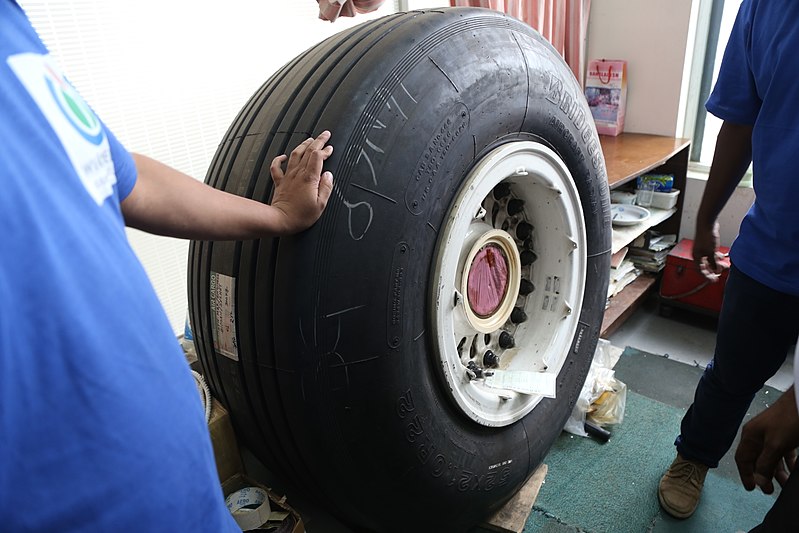 We spent the last few years collecting “stuff” all of it good stuff, mind you. We have flat rocks and used bricks (free) for the floor, wood from packing pallets (free) in the furred kitchen wall, and aluminum cans (free) not only in the walls and planters but also for the cistern (a future project). We are using newspaper printing plates (very inexpensive) as a ceiling in part of the house, broken and discontinued tiles (free) for counters and the kitchen floor, drywall from a construction site for another part of the ceiling — you get the idea. And of course the tires were free.
We spent the last few years collecting “stuff” all of it good stuff, mind you. We have flat rocks and used bricks (free) for the floor, wood from packing pallets (free) in the furred kitchen wall, and aluminum cans (free) not only in the walls and planters but also for the cistern (a future project). We are using newspaper printing plates (very inexpensive) as a ceiling in part of the house, broken and discontinued tiles (free) for counters and the kitchen floor, drywall from a construction site for another part of the ceiling — you get the idea. And of course the tires were free.
Generally speaking, we are very pleased with the way our house is turning out and are about ready to spend our first winter there. As with any house, there will always be changes and additions as time goes by but it gives us something to look forward to every day. Now go build yourself a house, or a shop, a horse barn, or a garage. You’ll have lots of fun and get some good exercise, too.
90,000 house from old tires: photo, project, construction, featuresDate: January 23 2020
Views: 789
Content
Stone, brick, blocks, wood and other common building materials are commonly used to build houses. Along with them, non-traditional materials and secondary raw materials, including used tires, are sometimes used for the construction of residential buildings and other buildings.
Along with them, non-traditional materials and secondary raw materials, including used tires, are sometimes used for the construction of residential buildings and other buildings.
This rather unusual and almost free building material is easy to find in landfills. We know that stingrays are suitable for making fences, flowerbeds, borders, as well as decor for playgrounds, such as swans or crocodiles. However, used tires can also be used for construction purposes.
Fans of classical construction techniques will be surprised to learn that old tires can be used not only to build a solid foundation, but also to build the walls of a residential building. Let's take a closer look at the history of this unconventional construction method. Let's evaluate the advantages of the material and deal with the features of the technology of building houses from tires.
Used tires were first used to build homes in the US.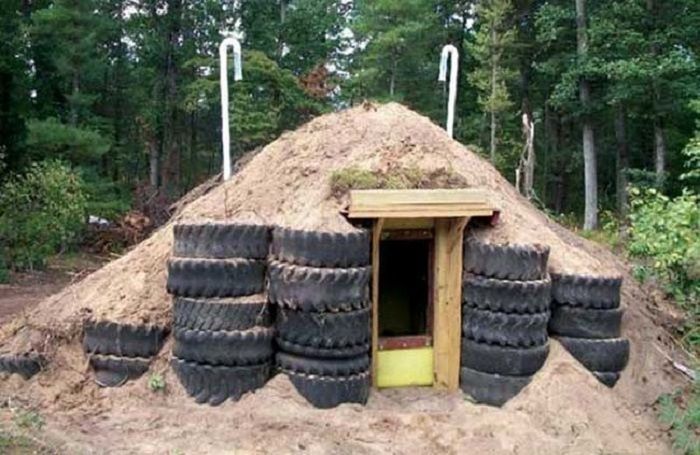 The technology was born in 1970, and the first stingray house was built by the founder of Earthship Biotecture, Mark Reynolds. He called his first building an "earthship".
The technology was born in 1970, and the first stingray house was built by the founder of Earthship Biotecture, Mark Reynolds. He called his first building an "earthship".
Most Reynolds buildings are rectangular or round. They are intended for construction on a slope with subsequent sprinkling with earth. There are large windows on the south side. They capture the heat that is stored in the room thanks to the thick adobe walls. The temperature inside such a house remains in the range of 18-23℃ throughout the year.
The construction method was supported by American, Canadian, African, European and Australian environmental activists. So gradually, an unusual construction technology began to be introduced around the world.
The main advantages of tire-based residential buildings are:
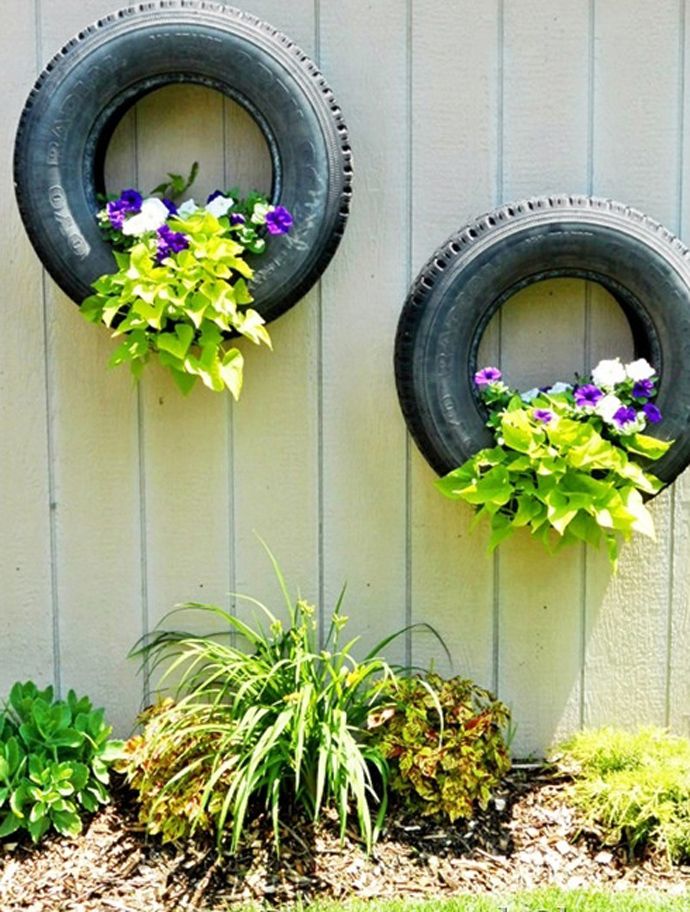 Inside the house is always a comfortable temperature;
Inside the house is always a comfortable temperature; Earth and clay have been used by people for centuries to build houses. Filling old tires with these substances allows you to build reliable houses at a minimum of costs.
To carry out the construction of the foundation foundation, slopes of equal diameter will be required. The foundation can be built both in a trench and directly on a planned site.
Let's dwell on the features of the first option. Procedure:
Procedure:
Laying the slopes can be carried out both with an offset of 50-100 cm, and directly to each other. It is allowed to use gravel mixed with sand as a filler for internal cavities. Backfilling the cavities between the slopes with earth and carefully compacting the filler will ensure the stability of the foundation.
Wall construction technology is similar to foundation construction. Unlike ordinary brick or block masonry, the construction of walls does not begin from corners, but in a circle.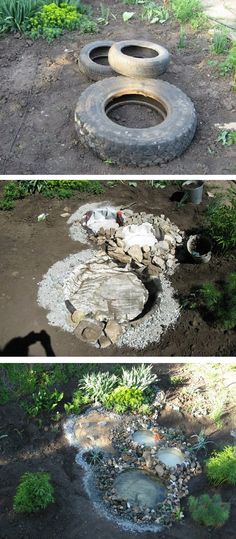 Tires are filled with clay mixed with sawdust. To prevent the spillage of the filler during tamping, the laying of ordinary cardboard will allow.
Tires are filled with clay mixed with sawdust. To prevent the spillage of the filler during tamping, the laying of ordinary cardboard will allow.
Each level of the slopes is tied with reinforcement. When erecting walls, horizontal and vertical control is mandatory.
The radial cavities between the slopes are filled with clay, into which fragments of bricks or stones are inserted. The surface of the walls is finished with plaster. Then you can install plasterboard or plywood sheets from the inside, as well as sheathe it with wood.
Such buildings also have serious drawbacks - in the summer, the smell of rubber is inevitable, and the appearance of such a residential building can hardly be called aesthetic. So while it is impossible to say with certainty that this technology will be widely used. Although, anything can happen ...
Viktor Filontsev
Online: Author and editor of articles on the website pobetony.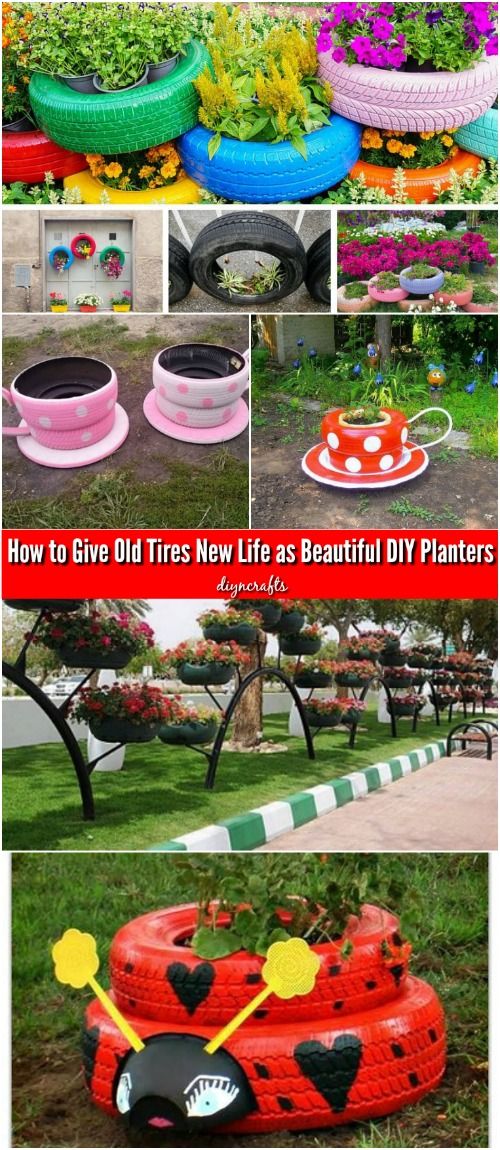 ru
ru
Education and work experience: Higher technical education. Experience in various industries and construction sites - 12 years, of which 8 years - abroad.
Other abilities and skills: Has the 4th electrical safety clearance group. Performing calculations using large data arrays.
Current employment: For the last 4 years he has been working as an independent consultant in a number of construction companies.
In today's world, more and more people practice to build their houses and other buildings (structures) from non-traditional materials and recycled materials.
Such construction is called "non-traditional construction". This article will discuss the construction of buildings and its elements from used car tires.
For the first time in the USA Mike Reynolds (video about the progress of its construction) was engaged in the construction of buildings from tires, and in Russia Mikhail Semykin from St. Petersburg.
Petersburg.
Mikhail Semykin first built a garage from tires, and then a foundation for a three-story house with an area of 260 m2 2 . The buildings of the inventor Semykin have been standing for more than a dozen years.
American Mike Reynolds in 1970 began building houses from tires. He began to call his buildings - "earth ships". His construction technology has found application in England, Portugal, Spain, Belgium, Estonia and other European countries, photo 1 .
Photo 1. Examples of the sale of houses with the use of used. car tires
Used car tires can be used to build the foundation and load-bearing walls of a building. Of these, not only residential buildings are erected, but also outbuildings, bathhouses, stairs, retaining walls, septic tanks, drainage pits, etc. - see photo 2.
Photo 2. Use of tires
Let us briefly consider the main points of the foundation of automobile tires, the disadvantages and advantages of using tires for construction.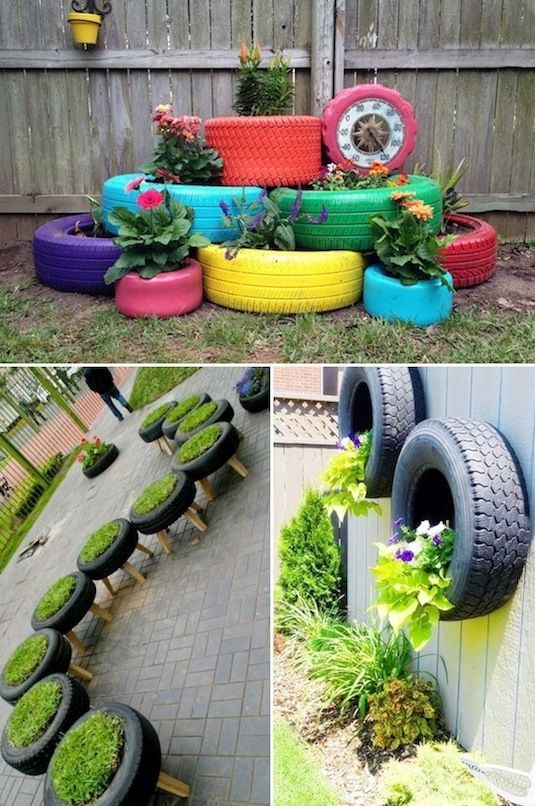
Tire foundation construction is carried out approximately in the following order:
Photo 3. Laying tires as a foundation
Photo 4. Filling the inner space of tires
Filling the inner space of tires
Photo 5. Installing wooden beams on a tire foundation
